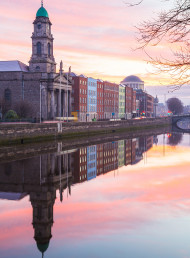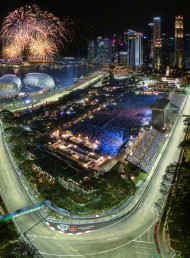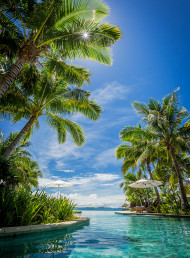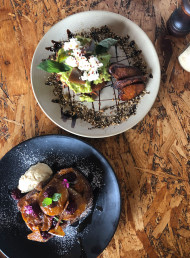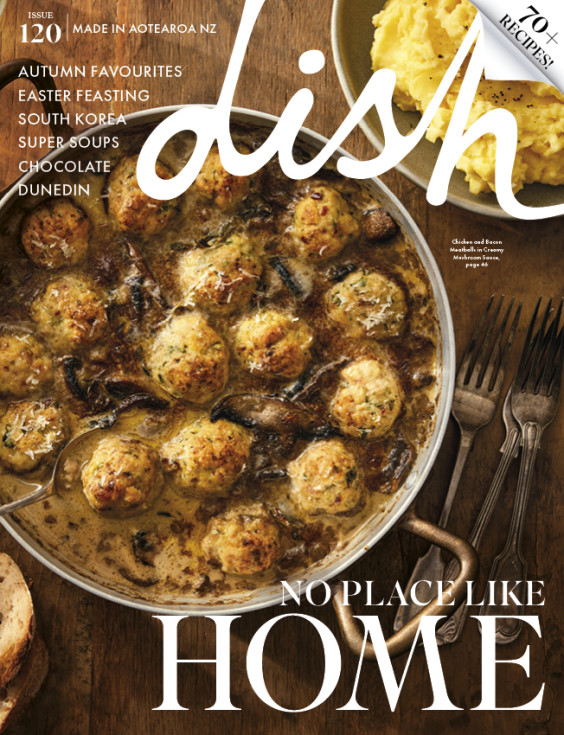A travel guide to Rotorua
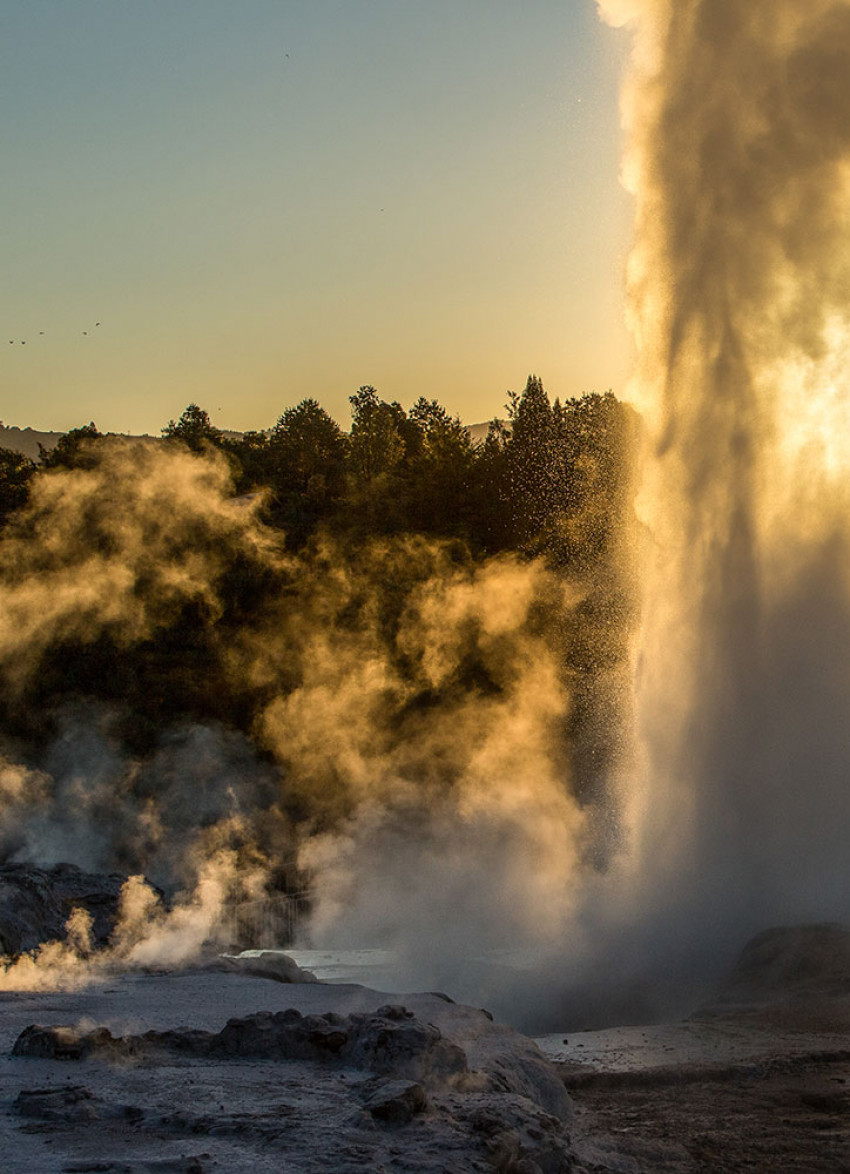
Blessed with an abundance of natural resources and breath-taking lakeside views, Ashley Ropati discovers there’s more to RotoVegas than mud pools and luging.
The ‘Sulphur City’ began drawing international visitors in the latter half of the 19th century, with visitors keen to sneak a peek at the ‘eighth’ wonder of the world, the Pink and White Terraces, in all their marbled, pink and white glory. The Terraces may have disappeared, but now the township is lauded for both its plentiful natural attractions and general Kiwi-ness, and tourism continues to reign supreme.
There’s also a craft beer and culinary scene to rival the best of Wellington and expansive cultural offerings located in Te Whakarewarewa Thermal Reserve. Consequently, Rotorua draws a diverse market now: the thrill-seekers, the geyser-goers, and young families seeking a crash course in New Zealand’s rich, indigenous past.
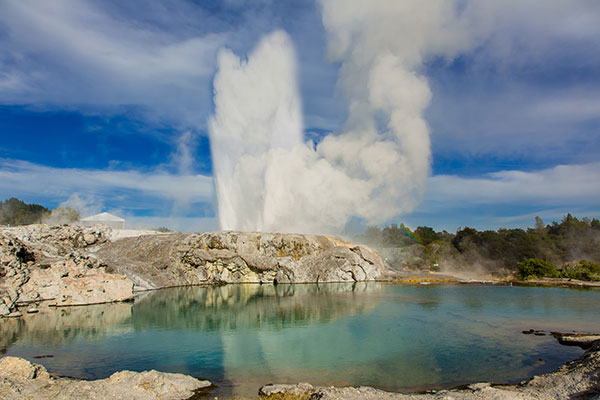
Admittedly this hub of adventure and activity hasn’t been on my radar since the mid 1990s and it’s easy to forget that it’s a mere two hours and 45 minutes out of Auckland.
You could also forget that there’s something in the air in Rotorua. Literally. But you can’t miss it when you get there – a distinct, sulphuric waft that abruptly calls your senses to attention, and provokes a resounding “pee-ew” from the car.
You soon adjust and the best thing to do on arrival in Rotorua is to embrace the sulphuric power and park up for the evening in one of the eight outdoor mineral spas at the popular Polynesian Spa.
Eco attractions
Those who visit to soak up the town’s natural beauty certainly won’t be disappointed. Located a mere 10 minutes out of town, you’ll find the The Redwoods – Whakarewarewa Forest, a large national park that’s home to majestic trees and a popular treewalk.
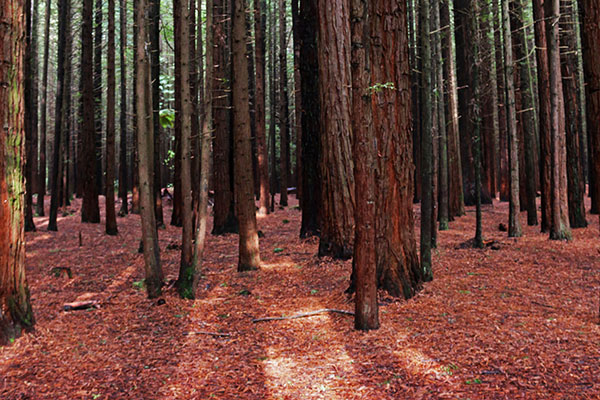
Our visit takes place shortly after 10am, with a handful of groups (friends, families and couples) eager to get started. Before you start the walk, which comprises of 23 suspension bridges hovering around 12 metres up, be sure to wander into the forest, find the centre and look up. If there’s anything that’ll make you feel small, it’s being surrounded by towering 116-year-old redwood trees.
At nearby brunch spot, Scope, for a post-walk feed, our waitress helps us choose from the line-up of brekkie classics and also suggests a return visit at night, to see the nightlights.
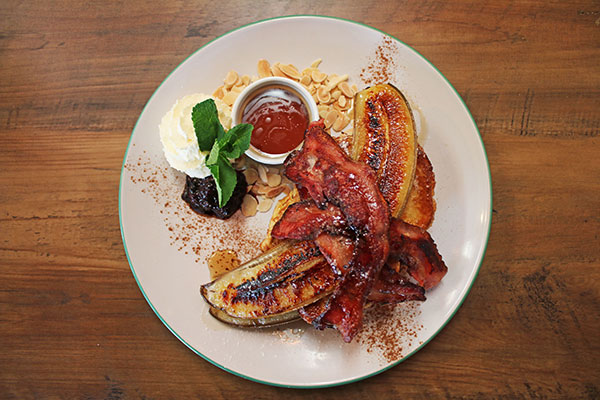
The nocturnal experience allows visitors to explore the forest under the shroud of darkness, illuminated by 30 bespoke technicolour lanterns, designed by renowned furniture designer and sustainability champion David Trubridge.
Trubridge’s approach to sculpture is, quite simply, breathtaking and the redwoods, forest ferns and native punga bask in the glow of his shapely creations.
Eating out
The city’s culinary quarter is a 100-metre stretch of eateries that do their very best to cover all bases. There’s Thai food, Indian, a decent pub meal and a few pizza joints.
Casual restaurant Atticus Finch is the perfect spot to settle in with the wine list for lunch and newcomer Terrace Kitchen is also packing serious culinary clout. Its slick interior and hearty brunch offerings (including irresistible cocktails) will have you planning a return visit.
Terrace Kitchen, close to the wharf, is ideally situated for a post-brunch trip to the weekly farmers’ market. It takes place just across the road at Te Manawa every Sunday morning with everything from organic fruit and home-grown manuka honey to repurposed ceramics on offer.
Make time for a wine
One of Roturua’s drawcards is the sky gondala, located about five minutes from the main drag. Here the luge, big ball rolling and the BMX track are conveniently clustered within a 500-metre radius of one another.
We go for a more chilled activity and head to the sky-high Volcanic Hills Winery. The winery boasts one of the best vantage points in town, with panoramic views to take in while our spirited host Johnny informs us about the subtle chardonnay, nuanced sauvignon blanc and crowd-pleasing pinot gris over a huge cheese board and charcuterie platter.
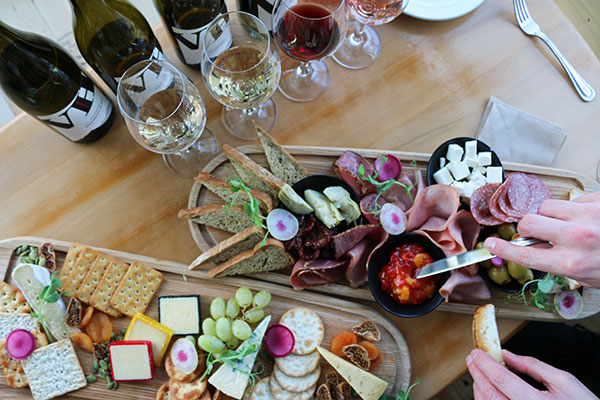
Cultural hub
The winery is a great find given that Rotorua may not be renowned as much of a wine-lovers’ destination, but it has earned its stripes as one of the best places in the country to learn more about traditional Māori custom.
A prime example is the not-for-profit Te Puia, steeped in indigenous history and a fitting snapshot of Kiwi culture at its very best.

Housed on Te Whakarewarewa land, the origins of this site are virtually embedded in our national story. Before the 1886 eruption of Mount Tarawera, the people of the land hosted the country’s first visitors, showcasing the famous Pink and White Terraces.
The Tuhourangi people offered travellers hospitality in their other-worldly geothermal springs and an unparalleled understanding of the land. Now, 200 years on, ‘the five pillars’ of the Te Puia experience – geothermal, nature, architecture, people and craft – are still offered to visitors from all over.
Guests receive a dynamic offering through tailored cultural experiences. The Te Rā package allows you to hover within spitting distance of the world’s largest active geyser, the Pohutu, absorbing hundreds of years’ worth of familial knowledge and mythology while you walk. We marvel at the kiwi bird in its man-made habitat, and witness generations of artistry at the on-site Wānanga Schools (Māori arts and crafts).
Come nightfall, visitors are invited to partake in a traditional pōwhiri or welcome during the Te Pō or evening experience, before enjoying the full hāngi of slow-cooked pork, chicken, lamb, smoky kumara and potato gratin, served with all the trimmings.
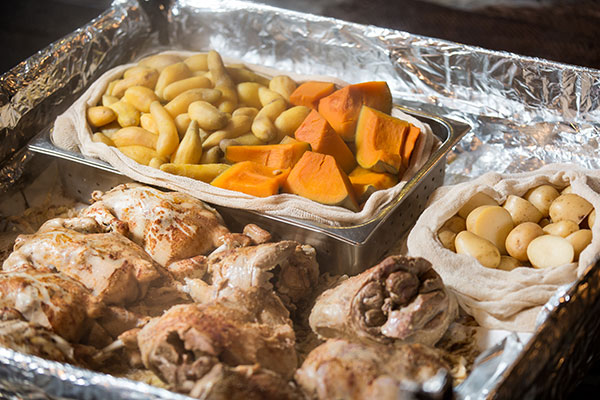
If you’re travelling, prepare to be dazzled, if you’re a Kiwi, you’ll feel an immense sense of pride – before realising how little you retained from high-school kapa haka when it comes time to perform the poi on stage.
After dinner, hosts guide you back to the geysers, to gaze at the stars, cosy up on the hot rocks and sip hot chocolate.
After such a long time between visits, what we discover shortly after arriving this time is that Rotorua serves as a snapshot of New Zealand. An entrée we present to the rest of the world. Tourism is priority – the Māori motifs on every corner echo this. Tourist spending has risen 9 per cent in the past year, commercial accommodation is up 6.7 per cent year on year, and private accommodation, including the likes of Airbnb, have increased by a staggering 67 per cent. Queenstown may be New Zealand’s tourism front-runner, but Rotorua is quietly catching up.
And when it comes to appreciating your home country, there’s nothing quite like seeing it reflected on the faces of tourists. The resounding “wow” from the visitors, reaffirms that Rotorua’s still got it, or that whatever ‘it’ is, never left.
Rotorua guide: the highlights
1. Eat
Terrace Kitchen: A hip new brunch spot and courtyard that comes to life as a live music venue after dark.
2. Drink
Brew Craft Beer Pub: Offering an impressive run list of Rotorua’s own Croucher Brewing beer, park up for the evening and soak up the vibe.
3. Stay
Sudima Hotel: Base yourself at this tidy hotel by the lake, no more than five minutes from all of the attractions.
4. Play
Ogo Big Ball Rolling: If you’re travelling with school-aged kids, consider this a must. The friendly staff will have you rolling down the hillside in a giant inflatable ball (at up to 60kph) in no time. The wind down in their hot tub makes it all worth it.
5. See
Redwoods Treewalk: Tipped a must-do when in town, this beautiful scenic walk is well worth the short drive out of town. If you can, visit after dark to sneak a peek at the nightlights.
latest issue:
Issue #120
As the days become shorter, and the nights cooler, the latest issue is perfectly timed to deliver delicious autumn dishes. From recipes using fresh seasonal produce such as feijoas and apples, to spectacular soothing soups and super-quick after-work meals in our Food Fast section, we’ve got you covered. With Easter on the horizon, we feature recipes that will see you through breakfast, lunch and dinner over a leisurely weekend holiday, and whip up chocolatey baking treats sure to please. We round up delicious dinners for two and showcase a hot new Korean cookbook before heading south to Dunedin to check out all that’s new in food and dining.The latest issue of dish is on sale NOW at all good bookstores and supermarkets – don’t miss it!

